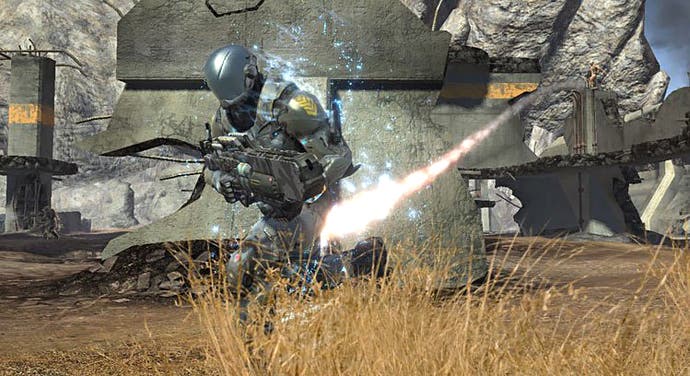Fracture
Did the Earth move for you?
We're not exactly short a few sci-fi action games in the coming year; in fact, a glance at the release schedules suggests that we may be in danger of being buried under sci-fi action games in the relatively near future. I wake up at night from lurid dreams where Halo 3 sits on me while Haze, Crysis, Army of Two and all their burly, steroid-enhanced space marine pals shout "pile-on!", only to discover that the damned cat has taken up residence on my chest again.
Okay, so I don't actually have dreams like that. But I could, and that's the point. To call sci-fi action an "over-crowded genre" is a bit like saying that Britain's recent weather has been "somewhat damp" - while holding a meagre bundle of rescued possessions above your head in the middle of the swirling waters that used to be Sheffield.
It's not that we don't like futuristic action games. It's well known that gamers despise aliens in all their forms (almost as much as we hate Nazis, Terrorists, Robots, Zombies and, er, Turtles) and relish the opportunity to blast them into oblivion. All we're saying is that if you're going to stand in front of the various aforementioned genre juggernauts, you'd better have something pretty unique to offer. "It's got a sniper rifle and a rocket launcher and you shoot aliens from the planet Zaarquon and it's got polygons and everything" isn't really going to impress anyone any more.
Lucasarts, to their credit, seem to understand this. When we sat down with them in London recently to cast an eye over their contribution to the pending tidal wave of action titles, they were keen to point out that Fracture brings its own unique and genre-bending twist to the mix. In this game, the earth moves.
Richter Scale

On the surface, Fracture is a solid enough sci-fi set up. The game postulates that a few decades hence, the world's land masses have been altered significantly by global warming - while scientific progress has split roughly down the middle between the genetic and biological progress in more liberal nations, and the robotic and pure technological progress in the more conservative states.
As a result, the world splits into two factions, which promptly start kicking the crap out of each other - one sending genetically engineered, bio-boosted super-soldiers into the fray, the other kitting its troops out with all manner of fancy-pants armour and weaponry. The timeline the team has dreamt up for this sequence of events is interesting if not terribly plausible; what's altogether more important is that it's cyborgs versus mutants. Hurrah!
Oh, and one other thing, most important of all. Buried in the exposition around the back-story is a mention of the development of weapons which have the ability to alter the earth's crust - in essence, turning the ground itself into a weapon.
This is Fracture's hook - the unique feature which, Lucasarts hopes, will propel it above the quagmire of me-too action titles and into gamers' hearts (and wallets). While other games treat the terrain as an immutable element, in Fracture the battlefield is a malleable thing which you alter to fit your own desires. Want some cover? Make a trench, or a mound to crouch behind. Need to get up to a high point? Knock up a quick ramp. How about knocking over a large object? Summon up a column of rock underneath it and you'll flip it over with ease.

This is all accomplished using a range of grenades which exploit the game's theoretical crust-altering technology. All weapons in the game alter the crust to some extent - rockets blow a shallow hole in the surface, for example - but the grenades exist for that specific function. The two most basic grenades are one which raises the land underneath its explosion point, and one which lowers the land - each by about five to ten feet, at our best estimate.
By itself, this is a powerful tool to have at your disposal. Playing through an early chapter of the game set in a dried-up San Francisco Bay, Lucasarts' rep first created a trench to hide behind and take out his enemies. Faced with assaulting a bunker housing a shielded anti-air gun, he demonstrated how he could either tunnel below the level of the bunker (entering through the relatively unprotected basement), or build a ramp up against its wall and come in through the roof.
Once inside, however, he was faced with a tough gun emplacement behind a shield. Simply shooting it with a standard weapon wasn't going to help much - and the solution to this system is a nice demonstration of how flexible Fracture's terrain physics can be. A "rise" grenade chucked at the base of the AA gun pushes the entire emplacement up - right up through the shield protecting the gun, which promptly slices it in half and blows it up rather nicely.



